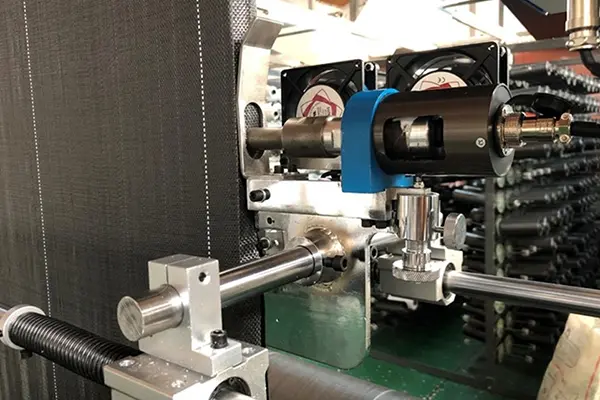Ultrasonic cutting is an advanced technology that has transformed various industries by offering high precision and speed in cutting a wide range of materials. Using high-frequency ultrasonic vibrations, this cutting method minimizes friction, reduces wear and tear, and produces clean and precise cuts. But just how fast is ultrasonic cutting, and how does it compare to other cutting methods? In this article, we explore the speed of ultrasonic cutting and examine the factors that affect the performance of an ultrasonic cutting machine.
What Is Ultrasonic Cutting?
Ultrasonic cutting is a process that utilizes ultrasonic waves—vibrations at a frequency typically above 20 kHz—to cut materials. An ultrasonic cutting machine consists of a generator, a transducer, and a cutting tool, or blade. The generator produces ultrasonic waves, which the transducer converts into mechanical vibrations. These vibrations are then transferred to the blade, allowing it to slice through materials with minimal resistance.
One of the key advantages of ultrasonic cutting is that it reduces the contact between the blade and the material. This minimizes the force required to make the cut and results in cleaner edges. Moreover, it is ideal for delicate, soft, or sticky materials that can be difficult to cut using conventional methods.
The Speed of Ultrasonic Cutting
The speed of ultrasonic cutting depends on several factors, including the material being cut, the thickness of the material, the design of the cutting tool, and the power of the ultrasonic cutting machine. In general, ultrasonic cutting is faster than traditional cutting methods, especially when it comes to delicate or complex materials.
- Material Type
The type of material being cut plays a significant role in determining the speed of ultrasonic cutting. For soft materials like foam, rubber, textiles, and thin plastics, ultrasonic cutting can achieve remarkable speeds, often much faster than mechanical cutting or laser cutting. The high-frequency vibrations allow the blade to glide through these materials effortlessly, enabling faster cutting speeds without compromising accuracy. In some cases, ultrasonic cutting can process materials at speeds up to 10 meters per minute, depending on the machine settings and material properties.
However, for harder materials such as metals or thicker composites, the speed may be slower, though ultrasonic cutting still offers advantages in terms of precision and reduced material damage. In these cases, the cutting speed may range from 1 to 5 meters per minute.
- Material Thickness
Thicker materials typically take longer to cut, regardless of the cutting method. In ultrasonic cutting, thinner materials can be processed more quickly since the ultrasonic blade doesn’t have to travel as far through the material. For very thin films or fabrics, ultrasonic cutting can reach extremely high speeds, significantly outperforming traditional cutting methods. - Cutting Tool Design
The design of the cutting tool, particularly the shape and sharpness of the blade, also affects the cutting speed. Specialized ultrasonic cutting machines with finely honed blades are capable of faster, more efficient cuts. Some machines offer interchangeable cutting heads, allowing users to switch to the most suitable tool for the job, further optimizing speed. - Machine Power and Settings
Ultrasonic cutting machines come in a variety of power levels, and higher-powered machines are generally capable of cutting through tougher materials at faster speeds. Additionally, many ultrasonic cutting machines allow users to adjust settings such as vibration frequency, amplitude, and cutting speed, enabling customization for different materials and cutting requirements. When the machine is optimized for the specific material, the cutting process can be completed quickly and efficiently.
Comparison to Other Cutting Methods
When compared to traditional cutting techniques, ultrasonic cutting stands out in terms of speed, especially for soft, thin, or complex materials. Laser cutting, for example, is also known for its speed, but it may not be suitable for all materials. Some materials can warp or burn when exposed to high temperatures during laser cutting. In contrast, ultrasonic cutting does not generate heat, making it a faster and safer alternative for temperature-sensitive materials like food, textiles, and thin plastics.
Mechanical cutting methods, such as using knives or blades, may be slower and less precise due to the friction and resistance encountered during the cutting process. Additionally, mechanical blades can dull over time, reducing efficiency and requiring frequent maintenance. An ultrasonic cutting machine, however, experiences much less wear and tear, allowing for sustained high-speed cutting over extended periods.
Conclusion
The speed of ultrasonic cutting varies depending on factors such as material type, thickness, cutting tool design, and machine power. In general, an ultrasonic cutting machine can process soft and thin materials quickly, reaching speeds of up to 10 meters per minute. For harder or thicker materials, ultrasonic cutting is still competitive, offering precision and quality even if the cutting speed is somewhat slower.
Overall, ultrasonic cutting provides a fast and efficient solution for industries ranging from textiles and food processing to electronics and automotive manufacturing. Its ability to handle a wide variety of materials at high speeds while maintaining exceptional accuracy makes it a valuable tool in modern manufacturing processes.
Post time: Sep-12-2024


